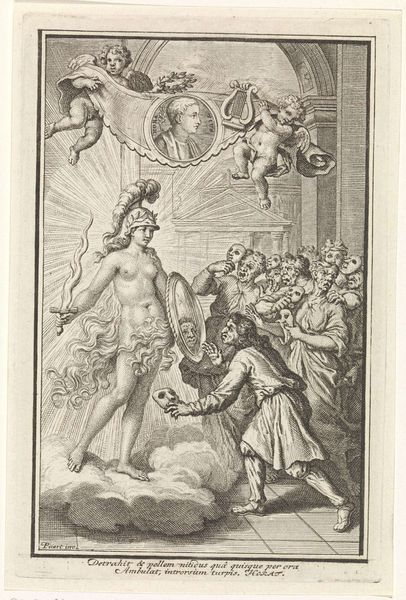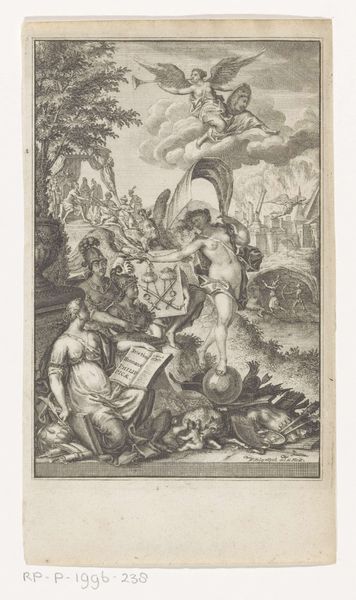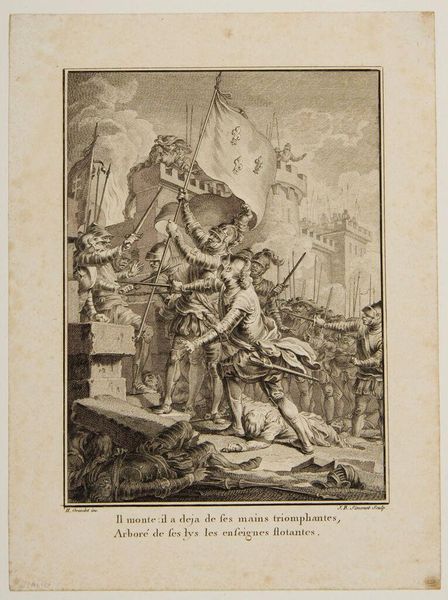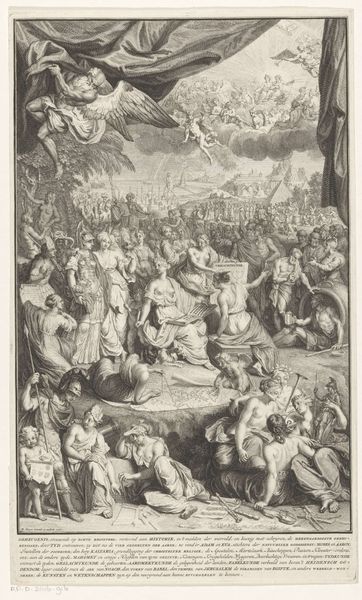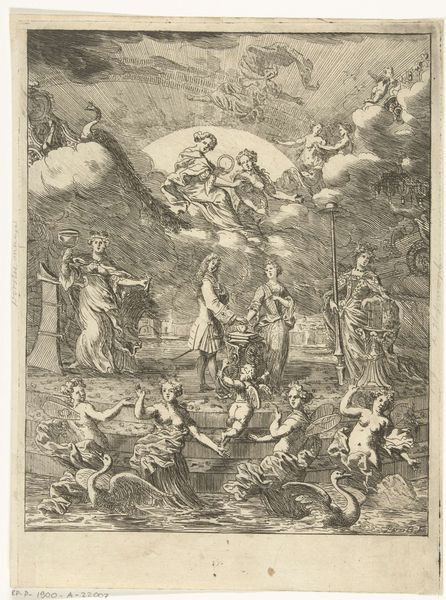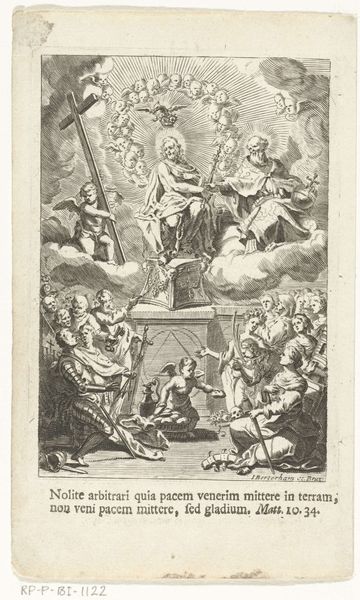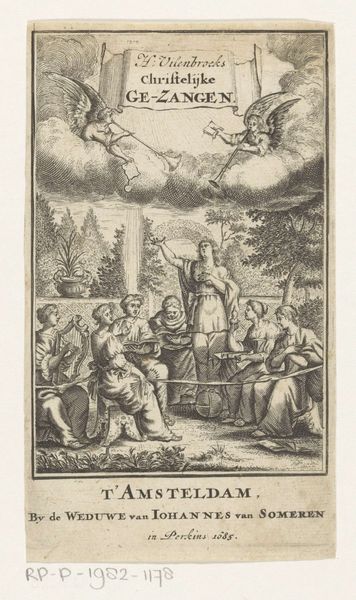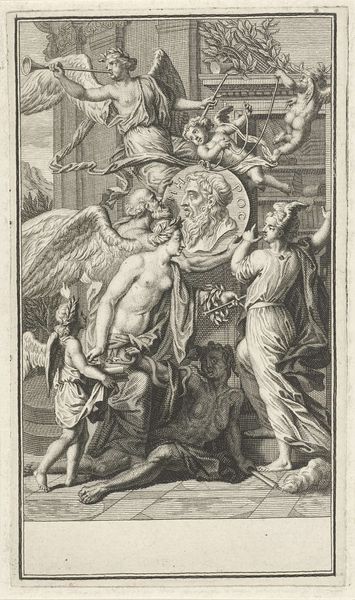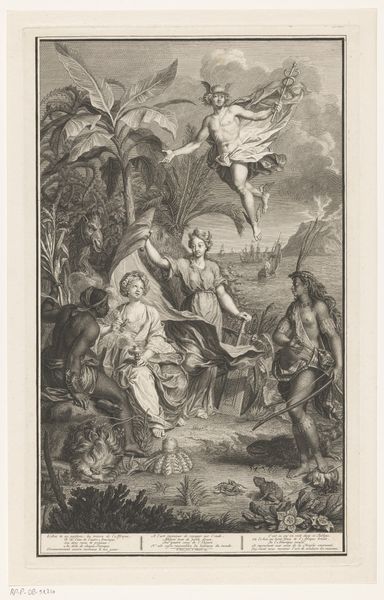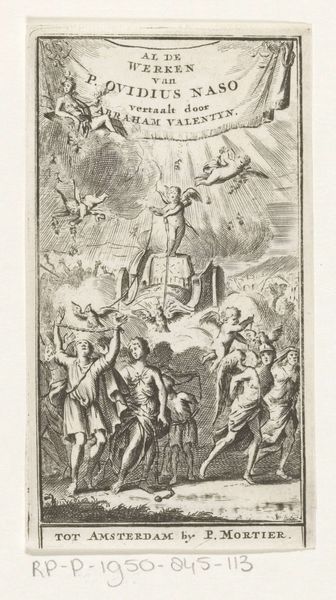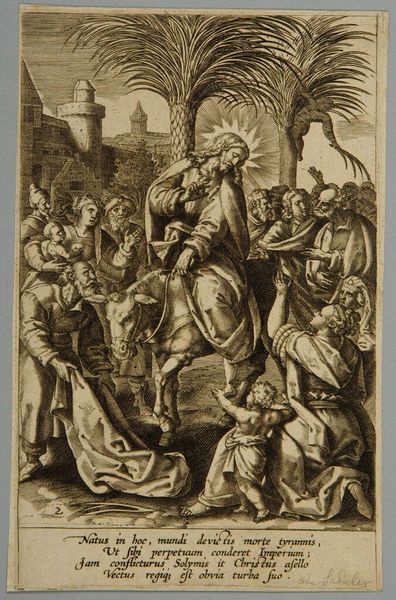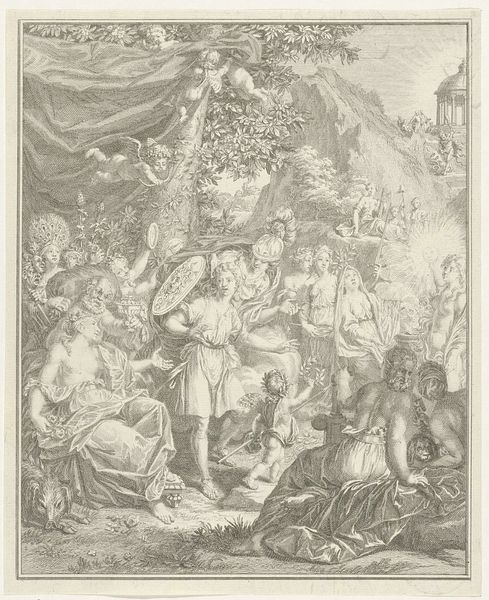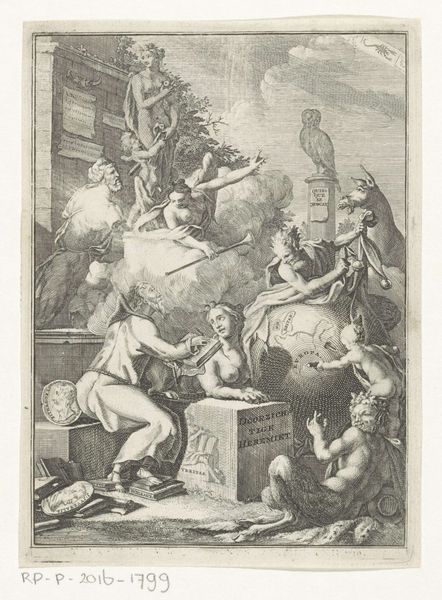
Allegorie op de macht van de Republiek der Zeven Verenigde Nederlanden als zeemogenheid 1730
0:00
0:00
bernardpicart
Rijksmuseum
print, metal, engraving
#
allegory
#
baroque
# print
#
metal
#
figuration
#
line
#
history-painting
#
engraving
Dimensions: height 136 mm, width 80 mm
Copyright: Rijks Museum: Open Domain
Curator: Welcome. We’re standing before Bernard Picart’s 1730 engraving, "Allegory on the Power of the Republic of the Seven United Netherlands as a Naval Power," housed right here at the Rijksmuseum. Editor: Immediately, I'm struck by its layered composition, almost like a stage set. It feels very intentional and clearly symbolic. So many figures clamoring for space in this elaborate scene! Curator: Indeed. Picart created this piece during a fascinating period of Dutch history, a time of both immense prosperity and growing anxieties about maintaining power. Editor: That anxiety certainly comes across. You have classical figures presiding over global trade routes and a defenseless man bound in chains. Who is represented here and who gets subjugated in the story the image tells? Curator: That is certainly at the core of what we need to consider! The central figures embody the Dutch Republic itself – a queen-like figure – with Peace and Commerce seated beside her. Neptune arrives on horseback holding his trident ready to dominate, whilst cherubs map continents beneath his feet. But that defenseless man as you put it is meant to represent subjugated Envy at the hand of the ever growing republic. Editor: The prominent display of maps also implicates colonial ambitions—this isn't just a celebration of trade; it's about power relations with specific regions, particularly in Africa, Asia, and America. Curator: Precisely. By that point the Dutch Republic had its brutal legacy cast on the so called “new” world. There are so many conflicting ideas here: peace and subjugation in the name of power. Editor: And the engraving technique really enhances the dynamic feel. Look at how Picart uses densely packed lines to convey the richness and power, but then the delicate treatment to create softer, vulnerable-seeming textures and faces. Curator: The texture contributes a lot to understanding the themes being explored. A close look reveals a sophisticated and well-thought plan that showcases Picart’s brilliance in that medium. Editor: This piece shows just how Baroque visual language could be twisted to political purposes; that we ought to be considering how those powers and historical inequities persist. Curator: Absolutely, examining pieces like this helps us grasp the complicated legacy of the Dutch Golden Age—its innovations, its global influence, and yes, its complex relationship with colonialism and social justice.
Comments
No comments
Be the first to comment and join the conversation on the ultimate creative platform.
